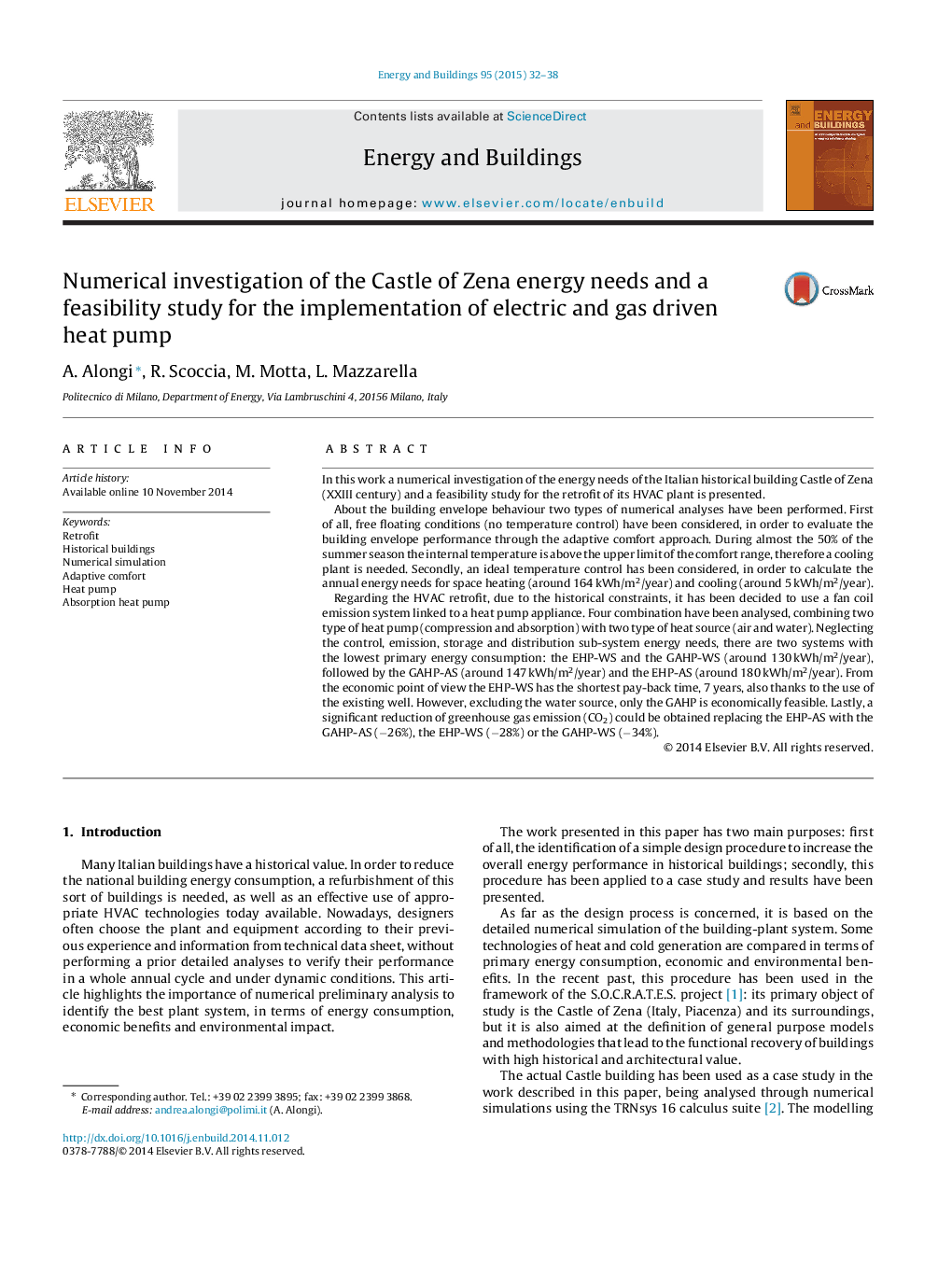| کد مقاله | کد نشریه | سال انتشار | مقاله انگلیسی | نسخه تمام متن |
|---|---|---|---|---|
| 262576 | 504041 | 2015 | 7 صفحه PDF | دانلود رایگان |
• Definition of a numerical transient model of a historical building (case study).
• Evaluation of the thermal energy needs and adaptive comfort analysis of the case study.
• Overall retrofit of the historical building considered.
• Energy, economic and environmental analysis of absorption and vapor compression heat pump systems, proposed for the retrofit of the case study.
In this work a numerical investigation of the energy needs of the Italian historical building Castle of Zena (XXIII century) and a feasibility study for the retrofit of its HVAC plant is presented.About the building envelope behaviour two types of numerical analyses have been performed. First of all, free floating conditions (no temperature control) have been considered, in order to evaluate the building envelope performance through the adaptive comfort approach. During almost the 50% of the summer season the internal temperature is above the upper limit of the comfort range, therefore a cooling plant is needed. Secondly, an ideal temperature control has been considered, in order to calculate the annual energy needs for space heating (around 164 kWh/m2/year) and cooling (around 5 kWh/m2/year).Regarding the HVAC retrofit, due to the historical constraints, it has been decided to use a fan coil emission system linked to a heat pump appliance. Four combination have been analysed, combining two type of heat pump (compression and absorption) with two type of heat source (air and water). Neglecting the control, emission, storage and distribution sub-system energy needs, there are two systems with the lowest primary energy consumption: the EHP-WS and the GAHP-WS (around 130 kWh/m2/year), followed by the GAHP-AS (around 147 kWh/m2/year) and the EHP-AS (around 180 kWh/m2/year). From the economic point of view the EHP-WS has the shortest pay-back time, 7 years, also thanks to the use of the existing well. However, excluding the water source, only the GAHP is economically feasible. Lastly, a significant reduction of greenhouse gas emission (CO2) could be obtained replacing the EHP-AS with the GAHP-AS (−26%), the EHP-WS (−28%) or the GAHP-WS (−34%).
Journal: Energy and Buildings - Volume 95, 15 May 2015, Pages 32–38
